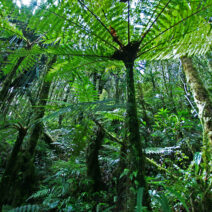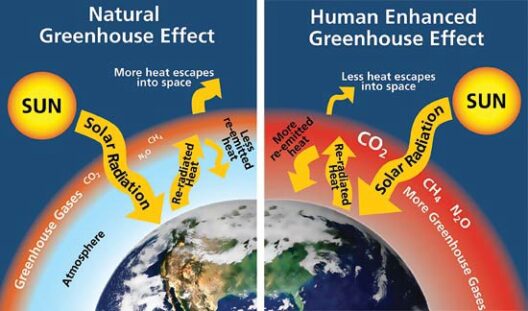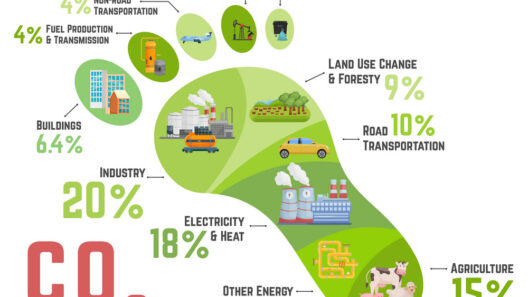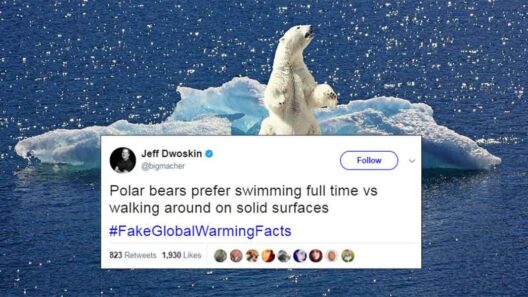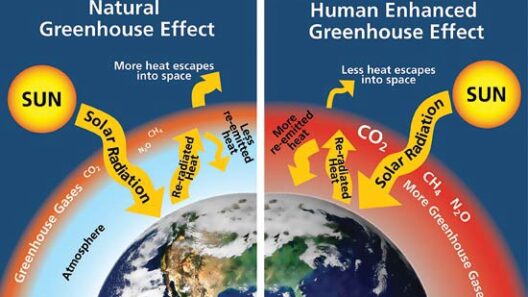Coral reefs, often termed as the “rainforests of the sea,” are among the most vibrant ecosystems on our planet. These intricate structures, formed by colonies of tiny marine animals called coral polyps, not only serve as habitats for a diverse array of marine life but also offer significant economic and environmental benefits. However, the alarming repercussions of global warming pose a grave threat to these delicate ecosystems. What if the very foundations of our ocean’s biodiversity were to crumble? The implications are dire, and the challenge of addressing this crisis is monumental.
As global temperatures rise, the repercussions of climate change become increasingly visible, particularly in coral reefs. One of the most alarming phenomena induced by rising ocean temperatures is coral bleaching. When stressful conditions arise, such as elevated water temperatures, corals expel the symbiotic algae known as zooxanthellae that live within their tissues. This algae provides corals with essential nutrients and their beautiful colors. Without them, corals turn white—hence the term “bleaching.” This loss of color is not merely cosmetic; it signals the onset of a perilous struggle for survival that can culminate in widespread mortality of coral colonies.
The statistics are daunting. According to recent studies, approximately 30% of the world’s coral reefs have already been destroyed, and the outlook remains grim if global warming continues at its current pace. Bleaching events are becoming more frequent and severe, affecting regions that once thrived with coral diversity. The consequences extend beyond aesthetic loss; entire ecosystems reliant on these reefs face potential collapse. Fish, sea turtles, and crustaceans, among others, depend on coral reefs for shelter, food, and breeding grounds. When reefs die, so does the intricate web of life that flourishes around them.
Besides bleaching, global warming contributes to the ocean’s acidification, another menace to coral ecosystems. As carbon dioxide (CO2) levels in the atmosphere increase, oceans absorb more of this gas, leading to a decline in pH levels. Acidic waters hinder corals’ ability to calcify, which is essential for building their calcium carbonate structures. A decrease in calcification rates limits the ability of reefs to grow and recover from damage, ultimately jeopardizing their integrity and resilience.
In addition to bleaching and acidification, rising sea levels, fueled by melting polar ice caps and thermal expansion of seawater, further threaten coral reefs. As sea levels rise, reefs can be inundated, leading to changes in light penetration and sediment deposition, which can suffocate coral. Around the world, coastal communities that depend on these reefs for protection against storms and erosion face an uncertain future.
Many regions, such as the Great Barrier Reef in Australia, have become focal points for studying the effects of climate change on coral reefs. The loss of biodiversity in these reefs is observable; iconic species like the clownfish and various sea turtles are becoming rarer. Scientists and conservationists are working tirelessly to implement strategies to protect and rehabilitate these ecosystems, but the scope of the challenge is immense. Will we be able to stave off the tide of destruction, or is it too late?
In response to the ongoing crisis, various measures have been proposed, including marine protected areas (MPAs), which can help to create refuges for coral reefs. These areas are designated to limit human activity, allowing ecosystems to recover from stressors such as overfishing and pollution. The establishment of MPAs has shown promise, yet their efficacy greatly depends on strict enforcement and local community involvement. Without widespread support from both governmental bodies and local populations, the potential gains may be diminished.
Moreover, researchers are exploring innovative approaches such as coral gardening and selective breeding of heat-resistant coral species. By cultivating resilient coral varieties in nurseries, scientists hope to reintroduce these robust corals back into weakened reef systems, improving their chances of survival in warmer waters. However, these methods face logistical and ethical dilemmas, including the challenge of determining which coral species to prioritize and how to maintain genetic diversity.
The plight of coral reefs is not solely an environmental issue; it is also a socio-economic one. Communities around the globe rely on reefs for food security, tourism, and coastal protection. The degradation of coral reefs threatens livelihoods, exacerbating poverty and food insecurity. Therefore, engaging local communities and educating them about sustainable practices is essential for long-term conservation. A collaborative approach that empowers individuals and fosters stewardship can yield positive results, yet such efforts must be sustained and adequately funded to be effective.
As the world grapples with climate change, individual action also plays a crucial role. Advocacy for reduced carbon footprints, sustainable fisheries, and pollution control can contribute to alleviating some of the pressures faced by coral reefs. By choosing sustainable seafood, reducing waste, and supporting policies aimed at reducing greenhouse gas emissions, individuals can cultivate a collective response to the crisis.
In conclusion, the challenges facing coral reefs due to global warming are staggering. Bleaching, acidification, and rising sea levels threaten to unravel these complex ecosystems that support much of our ocean’s life. While glimmers of hope exist through conservation efforts and innovative science, urgent action is necessary to mitigate this crisis. Will humanity rise to the occasion and protect our reefs, or will we condemn them to a slow demise? The future of coral reefs—and our oceans—hangs in the balance.
